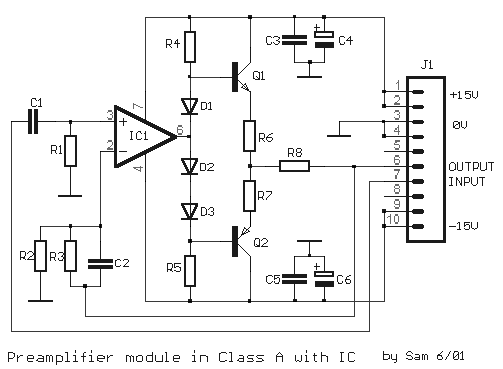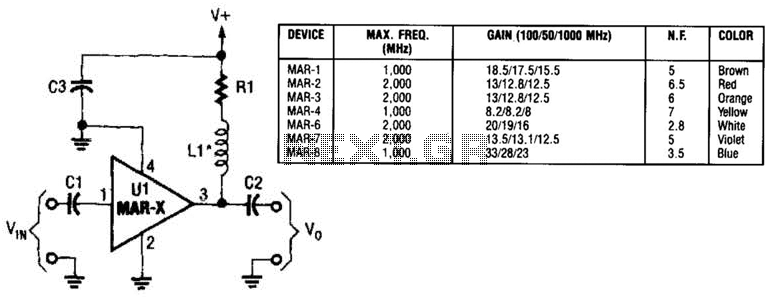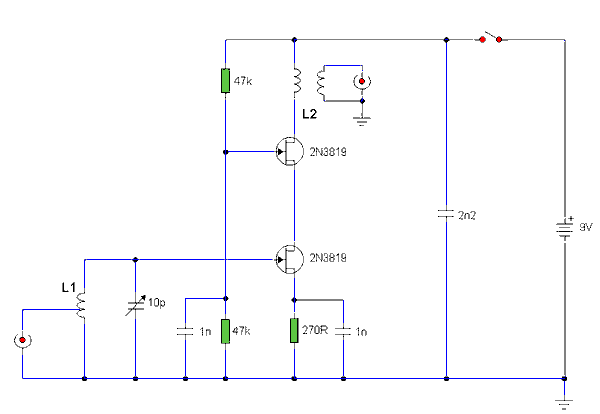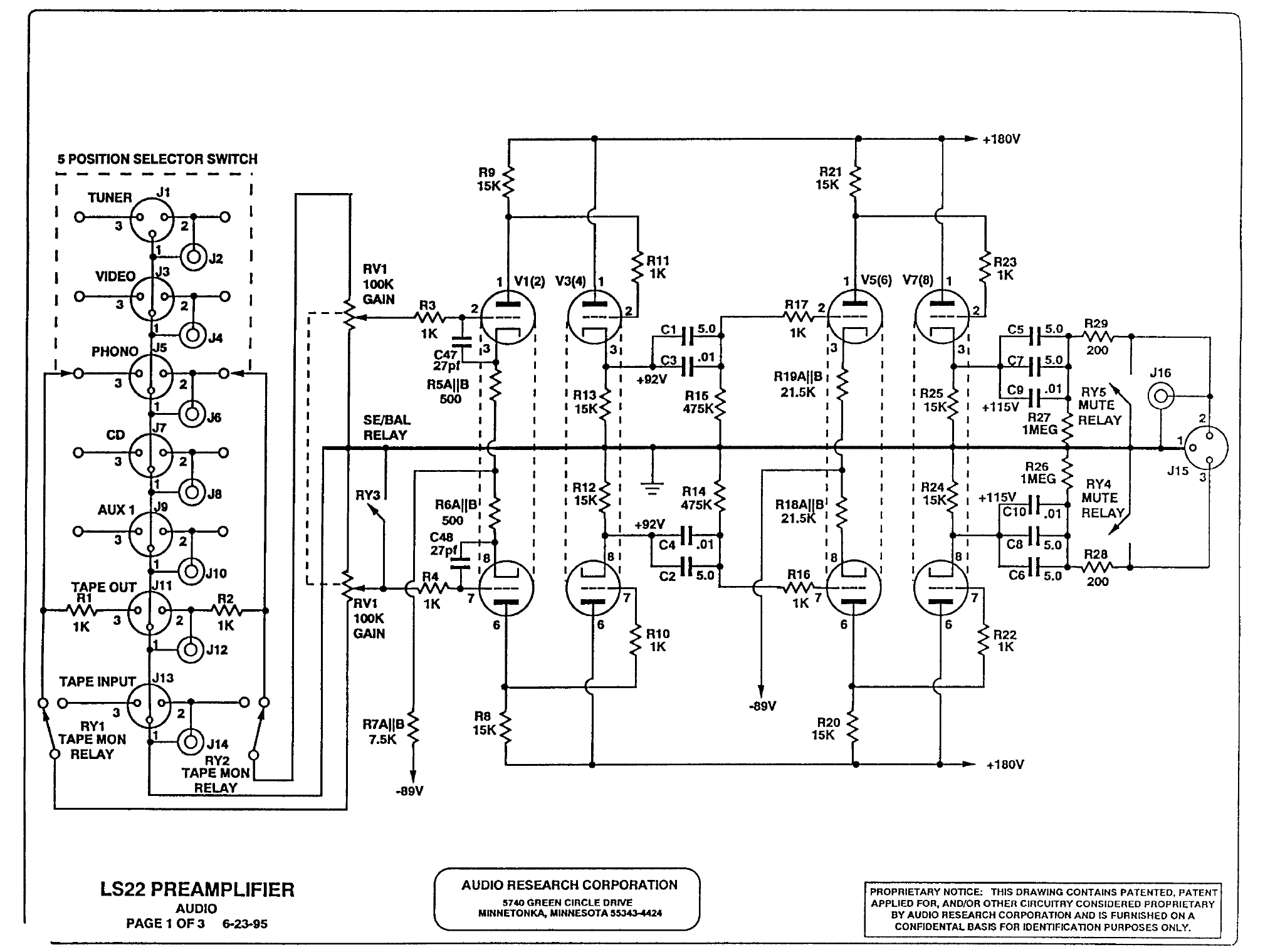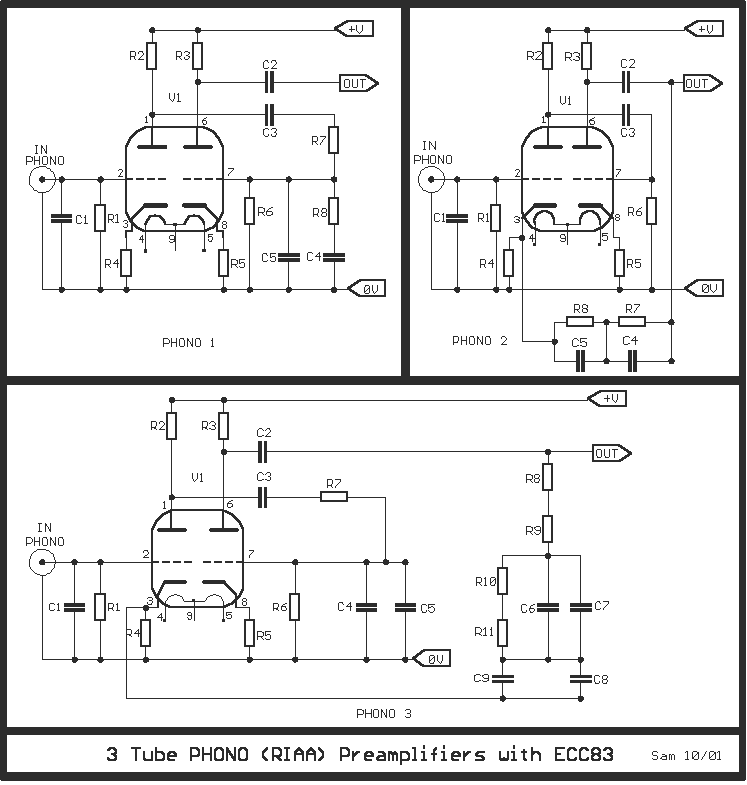
Preamp Stage For Ceramic Phono Cartridge Or Violin Pickups
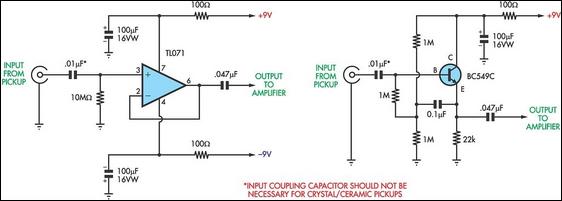
Although several variations of a standard RIAA preamplifier for magnetic phono cartridges have been published, there has not yet been a preamp stage designed specifically for ceramic cartridges.
The RIAA preamplifier is an essential component in the audio signal chain, particularly for vinyl playback, as it equalizes the audio signal to compensate for the frequency response characteristics of vinyl records. The standard RIAA curve boosts bass frequencies while attenuating higher frequencies to produce a balanced audio output.
In contrast, ceramic cartridges have a different output impedance and signal characteristics compared to magnetic cartridges. A dedicated preamplifier stage for ceramic cartridges should accommodate these differences by providing appropriate gain and impedance matching.
The circuit design for a ceramic cartridge preamplifier typically involves a high-impedance input stage to handle the low output voltage of the ceramic cartridge, followed by an amplification stage that may utilize operational amplifiers (op-amps) for low noise and high fidelity. The output stage should be designed to drive a standard line-level input effectively, ensuring compatibility with various audio equipment.
Key considerations in the design include power supply requirements, which can vary based on the op-amp chosen, and the implementation of appropriate filtering to minimize noise and interference. Additionally, the layout of the circuit board should be optimized to reduce parasitic capacitance and inductance, which can adversely affect audio quality.
Overall, the design and implementation of a dedicated preamp stage for ceramic cartridges would enhance the performance of audio systems utilizing these types of cartridges, providing a more tailored and high-quality listening experience.While we have published a number of variations on a standard RIAA preamplifier for magnetic phono cartridges, we have not published a preamp stage for cer.. 🔗 External reference
The RIAA preamplifier is an essential component in the audio signal chain, particularly for vinyl playback, as it equalizes the audio signal to compensate for the frequency response characteristics of vinyl records. The standard RIAA curve boosts bass frequencies while attenuating higher frequencies to produce a balanced audio output.
In contrast, ceramic cartridges have a different output impedance and signal characteristics compared to magnetic cartridges. A dedicated preamplifier stage for ceramic cartridges should accommodate these differences by providing appropriate gain and impedance matching.
The circuit design for a ceramic cartridge preamplifier typically involves a high-impedance input stage to handle the low output voltage of the ceramic cartridge, followed by an amplification stage that may utilize operational amplifiers (op-amps) for low noise and high fidelity. The output stage should be designed to drive a standard line-level input effectively, ensuring compatibility with various audio equipment.
Key considerations in the design include power supply requirements, which can vary based on the op-amp chosen, and the implementation of appropriate filtering to minimize noise and interference. Additionally, the layout of the circuit board should be optimized to reduce parasitic capacitance and inductance, which can adversely affect audio quality.
Overall, the design and implementation of a dedicated preamp stage for ceramic cartridges would enhance the performance of audio systems utilizing these types of cartridges, providing a more tailored and high-quality listening experience.While we have published a number of variations on a standard RIAA preamplifier for magnetic phono cartridges, we have not published a preamp stage for cer.. 🔗 External reference

